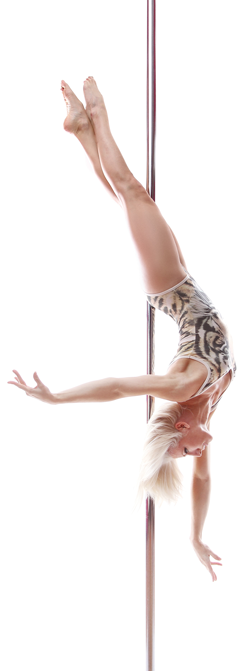 Profession: Dancer
Profession: Dancer
Location: New York City
You’re a member of Soka Gakkai International (SGI). How were you introduced to Nichiren Buddhism? My best friend from college was an SGI member who was born into the practice. I would see her chanting all the time, but it never occurred to me to ask her about it—it literally took me four years to go, “What are you doing?” She explained to me that she was chanting “Nam-myoho-renge-kyo,” the mystic law of the universe and part of the title of the Lotus Sutra [the main text of Nichiren Buddhism], and that it was a way to tap into each person’s innate potential for great wisdom and compassion—their buddhanature. I went to a meeting with her and began to chant, and it just spoke to me. I started to feel different. Things started to happen in my life.
How so? I got fired. Sort of.
What? I had a nine-to-five job as a graphic designer, working for a Korean company, but I’ve always danced, and every once in a while I’d go to an audition and book a dancing job on the side. Even before I started chanting, I was beginning to book more and more dancing gigs, and I realized that I could actually work as a professional dancer. But I still had this job at the office.
Then—two weeks after I received my Gohonzon, the scroll members receive that marks the start of Buddhist practice with SGI and that we focus on during morning and evening prayers—the New York office of the company was shut down and everybody was let go.
It was a big, big shake-up in my life, but it was for the best, and it was what I really needed to be able to pursue dancing full-time. I have had some amazing opportunities—I’ve performed as a dancer on SNL twice, on All My Children and The Onion News, as well as in two iPod commercials, a Dr. Pepper commercial, and a bunch of music videos. I do hip-hop, house, and voguing, but my two loves are breakdancing and pole dancing.
Breakdancing and pole dancing are not exactly mainstream. How did you get into them? I grew up listening to hip-hop, and my friend and I always wanted to learn how to break. When I moved to New York at 17, we heard that there were some B-boys and B-girls— breakdancers—practicing at Tompkins Square Park, so we went down there and asked if they could teach us something. So they taught us some basic footwork, and that was my introduction into the breakdancing community.
As for pole dancing, I saw really amazing pole dancing for the first time on YouTube five or six years ago, and I had this fantasy of “Wow, what if I could do that?”—which was followed immediately by “No, you can’t even do a split. You’re afraid of heights. Relax.” But then one of the pioneers of the pole fitness movement, Wendy Traskos, invited me to do a breakdancing routine during halftime at this big pole dance competition that she was hosting, the United States Pole Dance Federation Championship. It was the first time I had seen competitive pole dancers in person, and seeing them up close had an awesome effect on me. They looked just like B-girls, only in the air. And with less clothes. [Laughs.] Like Buddhist practice, it spoke to me in a way where I felt like I had to try it.
Let’s back up for a second. I’m guessing a lot of people don’t know that there are pole dance competitions! You’re not talking about stripping. Oh, no. There’s a whole underground culture of professional and nonprofessional pole dancers that come from all over the world. There are studios, there are instructors, there are competitions and pole superstars, and the whole thing is considered to be a respected athletic and artistic endeavor. Pole dancing came from the clubs, but now the people who do it have all sorts of backgrounds—rhythmic gymnastics, ballet—and pole fitness is a worldwide industry.
The world of professional dance is infamously cutthroat. Has chanting helped you deal with that? Chanting definitely helps you cultivate a higher life condition so that when you do meet with obstacles, frustrations, negativities, excuses, you name it—and with dance in particular, it’s a lot of rejection—you have more energy and more confidence to challenge these things until you break through them.
Before I began chanting I gave up much more quickly. I entered the Atlantic Pole Championships, which are held in Washington, DC, last year, and I got food poisoning two days before it, but I was like, no, I’m not giving up. I chanted for an hour, got on that bus, and performed my piece. [Laughs.]
Daisaku Ikeda, the president of SGI, talks a lot about human revolution. Each person who undergoes this great transformation through their practice will affect the world around them. When individuals are happy and empowered they’re more likely to take action for the sake of others, more likely to be aware of the dignity of life and to treat all life with respect in their everyday actions, more likely to encourage others to do the same.
So when you go to an SGI culture center and you see people chanting, you can really see that they’refighting, wrestling with themselves at the same time that they’re smiling and encouraging everybody around them. I’ll go into that room with some sort of problem, and when I see everyone I think to myself, Okay, I can face whatever this is and win. Let’s do it.
Thank you for subscribing to Tricycle! As a nonprofit, we depend on readers like you to keep Buddhist teachings and practices widely available.